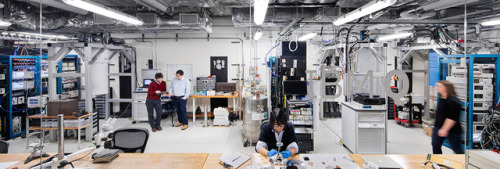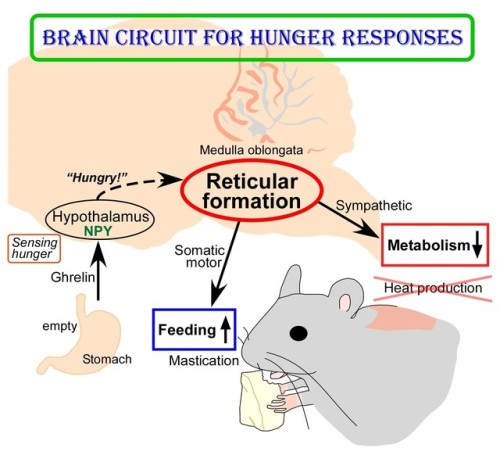Cassini Has Finally Reached Its End. But The Fiery End Doesn’t Have To Be As Sad As We’ve Imagined

Cassini has finally reached its end. But the fiery end doesn’t have to be as sad as we’ve imagined it. 🚀♥️ ✏️: @erika.nesvold #science #saturn #cassini #sad #home #sciencealert #beautiful http://ift.tt/2y7bUO1
More Posts from Science-is-magical and Others

This is what a star nursery looks like
Astronomers have spotted a beautiful blue ribbon in space that will one day ignite into a cluster of baby stars.
Astronomers try to track down hot spots for new stars by searching for clouds of dust in gas in the coldest parts of the Milky Way. The ESA’s Herschel space observatory is giving us rare glimpses inside these super-cold star nurseries.
The blue ribbon in this new image shows the coldest part of the cloud. It’s about minus 259 degrees Celsius and holds about 800 times the mass of the sun. Soon all that mass will crunch together and sprout new stars. Yet, one big piece of the star-birth puzzle is still a mystery.
Follow @the-future-now

Feb 28, 2013 - By wearing different colored hats, over 2,600 employees at Genentech (in San Francisco) celebrated the 60th anniversary of the discovery of DNA




Quantum computers have arrived.
First there was the mainframe, then came the personal computer, now we’ve reached a new monumental landmark in the history of technology. For the first time ever, IBM aims to bring universal quantum computers out of the lab and into the commercial realm. Projected to sift through vast possibilities and data, to choose the perfect option or discover unseen patterns, quantum computing is poised to drive a new era of innovation across industries. This means that some of the world’s most complex problems now have a chance of being solved. And as the quantum eco-system grows, a seemingly impossible kind of physics could start to make the most incredible things possible.
Learn More →

From retina to cortex: An unexpected division of labor
Neurons in our brain do a remarkable job of translating sensory information into reliable representations of our world that are critical to effectively guide our behavior. The parts of the brain that are responsible for vision have long been center stage for scientists’ efforts to understand the rules that neural circuits use to encode sensory information. Years of research have led to a fairly detailed picture of the initial steps of this visual process, carried out in the retina, and how information from this stage is transmitted to the visual part of the cerebral cortex, a thin sheet of neurons that forms the outer surface of the brain. We have also learned much about the way that neurons represent visual information in visual cortex, as well as how different this representation is from the information initially supplied by the retina. Scientists are now working to understand the set of rules—the neural blueprint— that explains how these representations of visual information in the visual cortex are constructed from the information provided by the retina. Using the latest functional imaging techniques, scientists at MPFI have recently discovered a surprisingly simple rule that explains how neural circuits combine information supplied by different types of cells in the retina to build a coherent, information-rich representation of our visual world.
Vision begins with the spatial pattern of light and dark that falls on the retinal surface. One important function performed by the neural circuits in the visual cortex is the preservation of the orderly spatial relationships of light versus dark that exist on the retinal surface. These neural circuits form an orderly map of visual space where each point on the surface of the cortex contains a column of neurons that each respond to a small region of visual space— and adjacent columns respond to adjacent regions of visual space. But these cortical circuits do more than build a map of visual space: individual neurons within these columns each respond selectively to the specific orientation of edges in their region of visual space; some neurons respond preferentially to vertical edges, some to horizontal edges, and others to angles in between. This property is also mapped in a columnar fashion where all neurons in a radial column have the same orientation preference, and adjacent columns prefer slightly different orientations.
Things would be easy if all the cortex had to do was build a map of visual space: a simple one to one mapping of points on the retinal surface to columns in the cortex would be all that was necessary. But building a map of orientation that coexists with the map of visual space is a much greater challenge. This is because the neurons of the retina do not distinguish orientation in the first step of vision. Instead, information on the orientation of edges must be constructed by neural circuits in the visual cortex. This is done using information supplied from two distinct types of retinal cells: those that respond to increases in light (ON-cells) and those that respond to decreases in light (OFF-cells). Adding to the complexity, orientation selectivity depends on having individual cortical neurons receive their ON and OFF signals from non-overlapping regions of visual space, and the spatial arrangement of these regions determines the orientation preference of the cell. Cortical neurons that prefer vertical edge orientations have ON and OFF responsive regions that are displaced horizontally in visual space, those that prefer horizontal edge orientations have their ON and OFF regions displaced vertically in visual space, and this systematic relationship holds for all other edge orientations.
So cortical circuits face a paradox: How do they take the spatial information from the retina and distort it to create an orderly map of orientation selectivity, while at the same time preserving fine retinal spatial information in order to generate an orderly map of visual space? Nature’s solution might best be called ‘divide and conquer’. By using imaging technologies that allow visualization of the ON and OFF response regions of hundreds of individual cortical neurons, Kuo-Sheng Lee and Sharon Huang in David Fitzpatrick’s lab at MPFI have discovered that fine scale retinal spatial information is preserved by the OFF response regions of cortical neurons, while the ON response regions exhibit systematic spatial displacements that are necessary to build an orderly map of edge orientation. Preserving the detailed spatial information from the retina in the OFF response regions is consistent with evidence that dark elements of natural scenes convey more fine scale information than the light elements, and that OFF retinal neurons have properties that allow them to better extract this information. In addition, Lee et al. show that this OFF-anchored cortical architecture enables emergence of an additional orderly map of absolute spatial phase—a property that hasn’t received much attention from neuroscientists, but computer vision research has shown contains a wealth of information about the visual scene that can be used to efficiently encode spatial patterns, motion, and depth.
While these are important new insights into how visual information is transformed from retina to cortical representations, they pose a host of new questions about the network of synaptic connections that performs this transformation, and the developmental mechanisms that construct it, questions that the Fitzpatrick Lab continues to explore.
why do we have butt cheeks i dont understand why did we evolve this way
what use do butt cheeks have

(Image caption: The empty stomach releases the hormone called ghrelin. By receiving ghrelin, the hypothalamus in the brain senses hunger and produces “hunger signaling” through the action of neuropeptide Y (NPY). The hunger signaling activates neurons in the reticular formation of the medulla oblongata, which then inhibit sympathetic output to reduce metabolic heat production and simultaneously provide masticatory motor rhythm to facilitate feeding. Credit: © 2017 Yoshiko Nakamura)
New Insights into Brain Circuit for Hunger Responses during Starvation
The human body responds to starving conditions, such as famine, to promote the chance of survival. It reduces energy expenditure by stopping heat production and promotes feeding behavior. These “hunger responses” are activated by the feeling of hunger in the stomach and are controlled by neuropeptide Y (NPY) signals released by neurons in the hypothalamus. However, how NPY signaling in the hypothalamus elicits the hunger responses has remained unknown.
Sympathetic motor neurons in the medulla oblongata are responsible for heat production by brown adipose tissue (BAT). Researchers centered at Nagoya University have now tested whether the heat-producing neurons respond to the same hypothalamic NPY signals that control hunger responses. They injected NPY into the hypothalamus of rats and tested the effect on heat production. Under normal conditions, blocking inhibitory GABAergic receptors or stimulating excitatory glutamatergic receptors in the sympathetic motor neurons induced heat production in BAT. After NPY injection, stimulating glutamatergic receptors did not produce heat, but inhibiting GABAergic receptors did. The study was reported in Cell Metabolism.
“This indicated that hypothalamic NPY signals prevent BAT thermogenesis by using inhibitory GABAergic inputs to sympathetic motor neurons,” study lead author Yoshiko Nakamura says.
Retrograde and anterograde tracing with fluorescent dyes revealed which brain region provided the inhibitory GABAergic inputs to heat-producing motor neurons.
“Tracing experiments showed that sympathetic motor neurons are directly innervated by GABAergic inputs from reticular nuclei in the medulla oblongata,” corresponding author Kazuhiro Nakamura explains, “selective activation of these GABAergic reticular neurons inhibits BAT thermogenesis.”
The researchers’ further findings showed that GABAergic inputs from medullary reticular neurons are involved in hypothalamic NPY-mediated inhibition of heat production in BAT. This hunger response circuit probably explains why anorexic individuals suffer from hypothermia.
Interestingly, stimulation of these medullary reticular neurons prompted rats to begin chewing and feeding. This effect was similar to injecting NPY into the hypothalamus, suggesting that hypothalamic NPY signaling activates reticular neurons in the medulla oblongata to promote feeding and mastication during the hunger response.
Abnormal activation of these neurons under non-starved conditions may contribute to obesity. Understanding these mechanisms could lead to development of more effective treatments for obesity.
My kid is playing a paper piano. I think I might be more wowed than anyone else in my house.
Besides the nerdy factor of circuit completion and conductivity of graphite… It’s just kind of kickass that a paper piano that I drew can work just like a real one with minimal effort AND my kids can play it way easier than a real piano.
-
 cthulhu-ficcer reblogged this · 5 years ago
cthulhu-ficcer reblogged this · 5 years ago -
 science-is-magical reblogged this · 7 years ago
science-is-magical reblogged this · 7 years ago -
 bythebrea reblogged this · 7 years ago
bythebrea reblogged this · 7 years ago -
 annechen-melo liked this · 7 years ago
annechen-melo liked this · 7 years ago -
 kisleth reblogged this · 7 years ago
kisleth reblogged this · 7 years ago -
 0suppress liked this · 7 years ago
0suppress liked this · 7 years ago -
 omgrosebriar-blog liked this · 7 years ago
omgrosebriar-blog liked this · 7 years ago -
 kilcesvom-blog liked this · 7 years ago
kilcesvom-blog liked this · 7 years ago -
 deadsappyseal liked this · 7 years ago
deadsappyseal liked this · 7 years ago -
 mousougirl reblogged this · 7 years ago
mousougirl reblogged this · 7 years ago -
 drakyndra reblogged this · 7 years ago
drakyndra reblogged this · 7 years ago -
 rudeginger liked this · 7 years ago
rudeginger liked this · 7 years ago -
 crazyasarocket reblogged this · 7 years ago
crazyasarocket reblogged this · 7 years ago -
 crazyasarocket liked this · 7 years ago
crazyasarocket liked this · 7 years ago -
 spyderqueen reblogged this · 7 years ago
spyderqueen reblogged this · 7 years ago -
 merinnan reblogged this · 7 years ago
merinnan reblogged this · 7 years ago -
 mnd99-blog liked this · 7 years ago
mnd99-blog liked this · 7 years ago -
 drakyndra liked this · 7 years ago
drakyndra liked this · 7 years ago -
 party-with-a-gas-can liked this · 7 years ago
party-with-a-gas-can liked this · 7 years ago -
 vaspider liked this · 7 years ago
vaspider liked this · 7 years ago -
 laurenthemself reblogged this · 7 years ago
laurenthemself reblogged this · 7 years ago -
 meanderingandrambling reblogged this · 7 years ago
meanderingandrambling reblogged this · 7 years ago -
 maggiemae873 reblogged this · 7 years ago
maggiemae873 reblogged this · 7 years ago -
 jcfarrell113 liked this · 7 years ago
jcfarrell113 liked this · 7 years ago -
 foodbookandteablog liked this · 7 years ago
foodbookandteablog liked this · 7 years ago -
 its-holden-caulfield reblogged this · 7 years ago
its-holden-caulfield reblogged this · 7 years ago -
 maeganbobaegan liked this · 7 years ago
maeganbobaegan liked this · 7 years ago -
 ununnilium liked this · 7 years ago
ununnilium liked this · 7 years ago -
 miome-decompression liked this · 7 years ago
miome-decompression liked this · 7 years ago -
 stoneegg21 liked this · 7 years ago
stoneegg21 liked this · 7 years ago -
 youandthemountains liked this · 7 years ago
youandthemountains liked this · 7 years ago -
 celticdevil90 reblogged this · 7 years ago
celticdevil90 reblogged this · 7 years ago -
 couldyoujusttrustmethisonce reblogged this · 7 years ago
couldyoujusttrustmethisonce reblogged this · 7 years ago -
 welpthatdidntwork liked this · 7 years ago
welpthatdidntwork liked this · 7 years ago -
 cortue liked this · 7 years ago
cortue liked this · 7 years ago -
 charlio44 liked this · 7 years ago
charlio44 liked this · 7 years ago -
 felinitie reblogged this · 7 years ago
felinitie reblogged this · 7 years ago -
 felinitie liked this · 7 years ago
felinitie liked this · 7 years ago -
 fumbles-mcstupid liked this · 7 years ago
fumbles-mcstupid liked this · 7 years ago -
 yvngplague919 liked this · 7 years ago
yvngplague919 liked this · 7 years ago -
 deathsquad9000 reblogged this · 7 years ago
deathsquad9000 reblogged this · 7 years ago -
 absolutely-and-always13 reblogged this · 7 years ago
absolutely-and-always13 reblogged this · 7 years ago -
 absolutely-and-always13 liked this · 7 years ago
absolutely-and-always13 liked this · 7 years ago -
 morethanonepage reblogged this · 7 years ago
morethanonepage reblogged this · 7 years ago -
 foofygoldfish reblogged this · 7 years ago
foofygoldfish reblogged this · 7 years ago -
 scarlettaagni reblogged this · 7 years ago
scarlettaagni reblogged this · 7 years ago -
 oceanblue971 reblogged this · 7 years ago
oceanblue971 reblogged this · 7 years ago


